Abstract
The nuclear magnetic resonance spin-grouping technique has been applied to dentin from human donors of different ages. The apparent T2, T1, and T1 rho have been determined for natural dentin, for dentin which has been dried in vacuum, and for dried dentin which has been rehydrated in an atmosphere with 75% relative humidity. All apparent spin relaxation has been analyzed for exchange between the spin groups in which the dentin protons exist; the analyses incorporate the results of selective inversion recovery T1 measurements which better probe the effects of exchange. The exchange analyses of the high fields and rotating frame spin-lattice relaxation have also been correlated to determine uniquely the inherent relaxation parameters of the proton spin groups constituting the dentin magnetization. The natural dentin contains protons on water, protein, and hydroxy apatite; these spins contribute 50%, 45%, and 5% to the total dentin proton magnetization, respectively. The water exists in three distinct environments, the dynamics of each environment has been modeled. In the natural dentin 30% of the water undergoes uni-axial reorientation. 52% of the water has similar relaxation characteristics to bound water hydrating a large molecule, and the majority of the remaining water acts as bulk water undergoing isotropic reorientation. The results are independent of the age of the donor.
Full text
PDF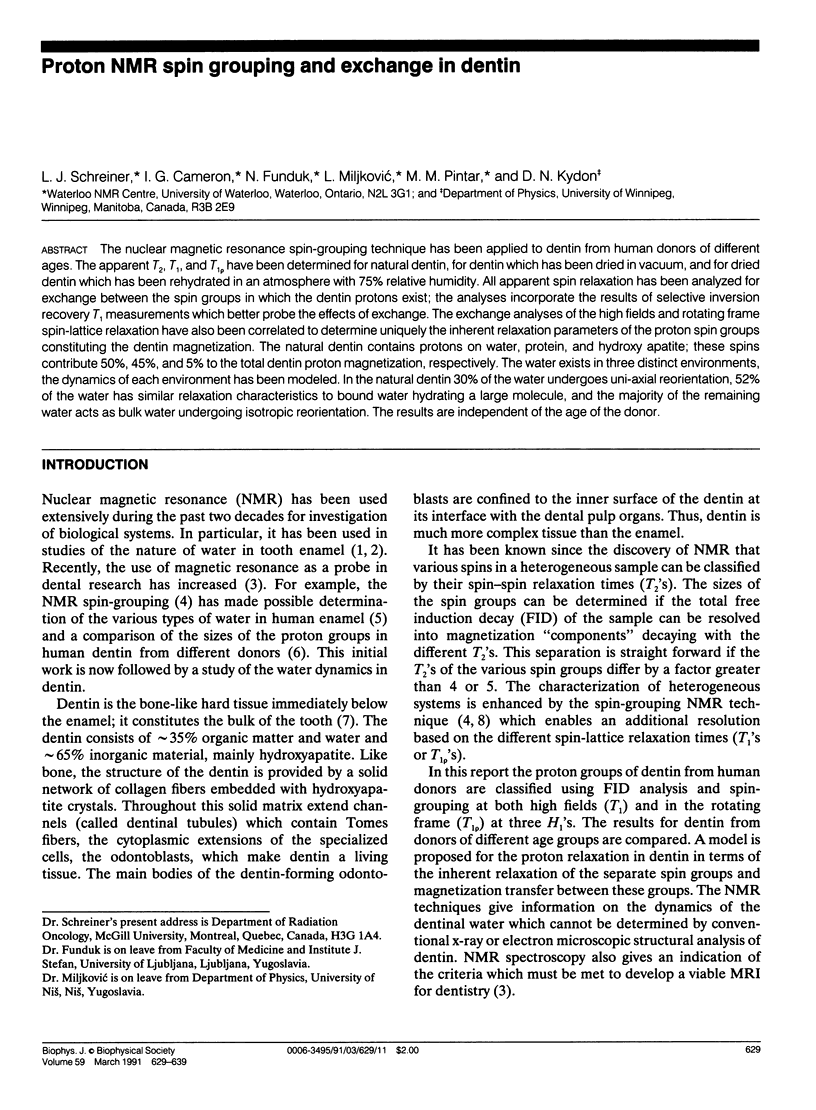


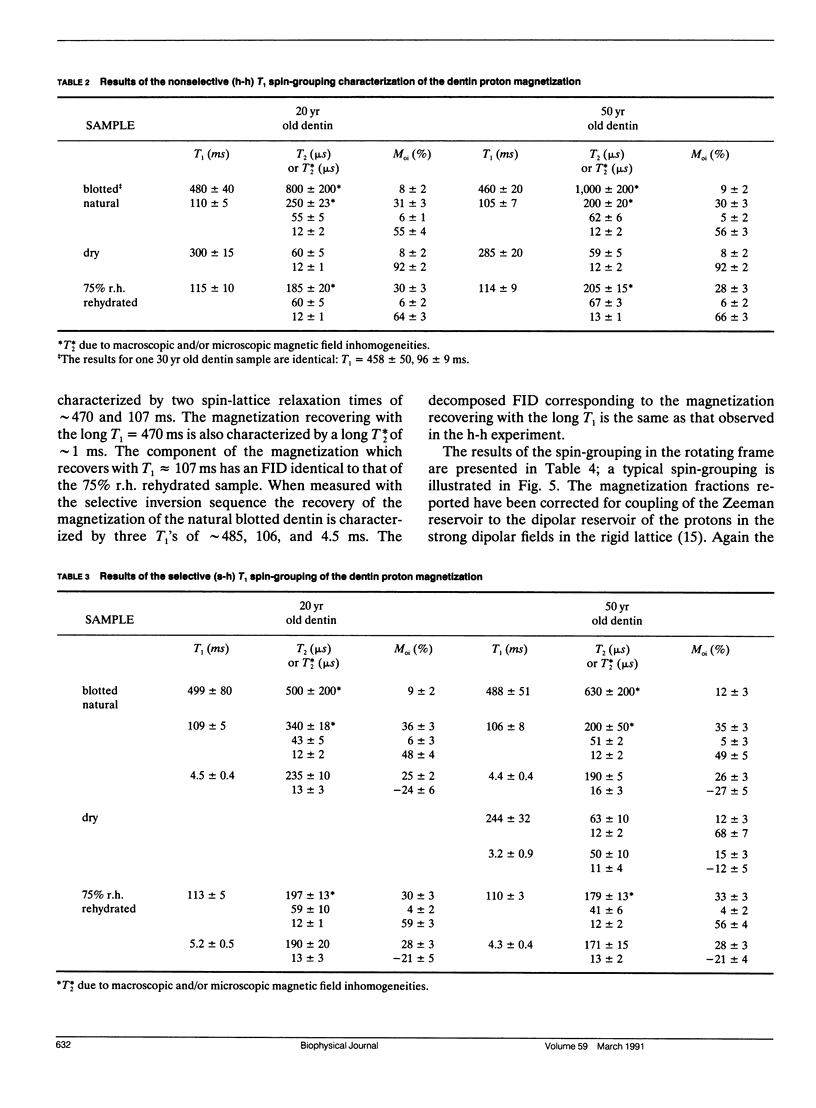

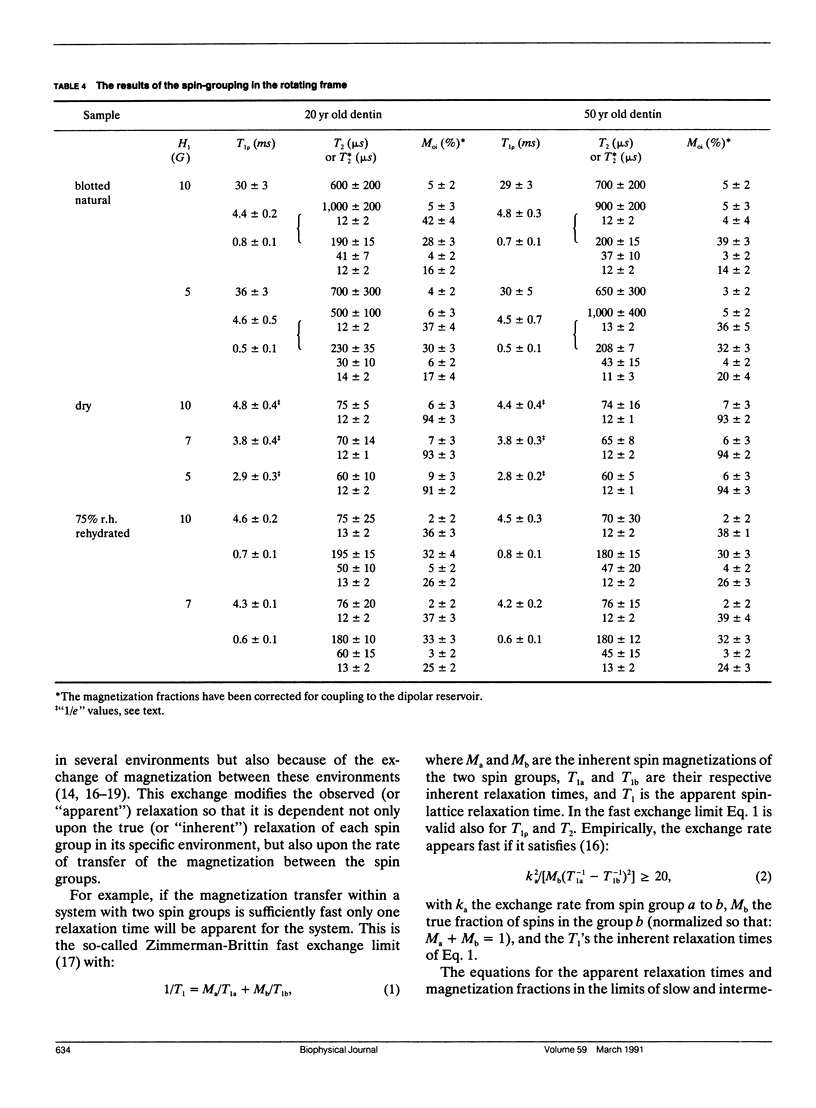
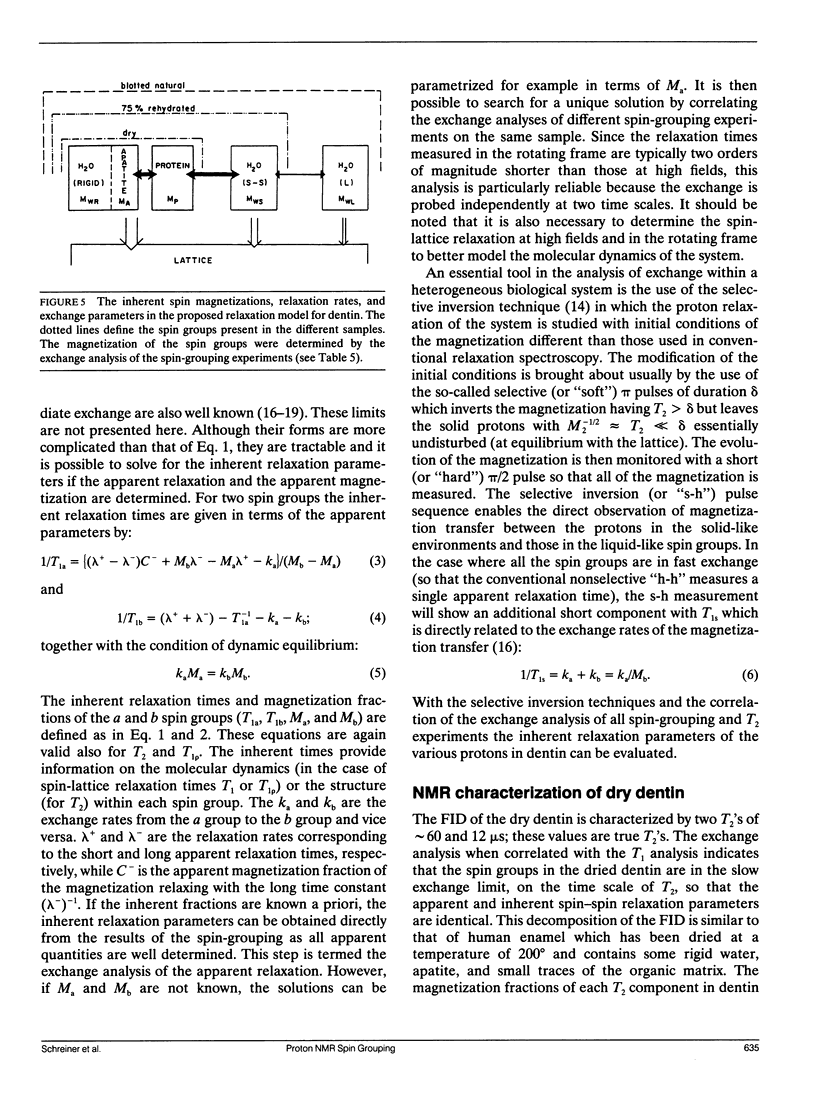

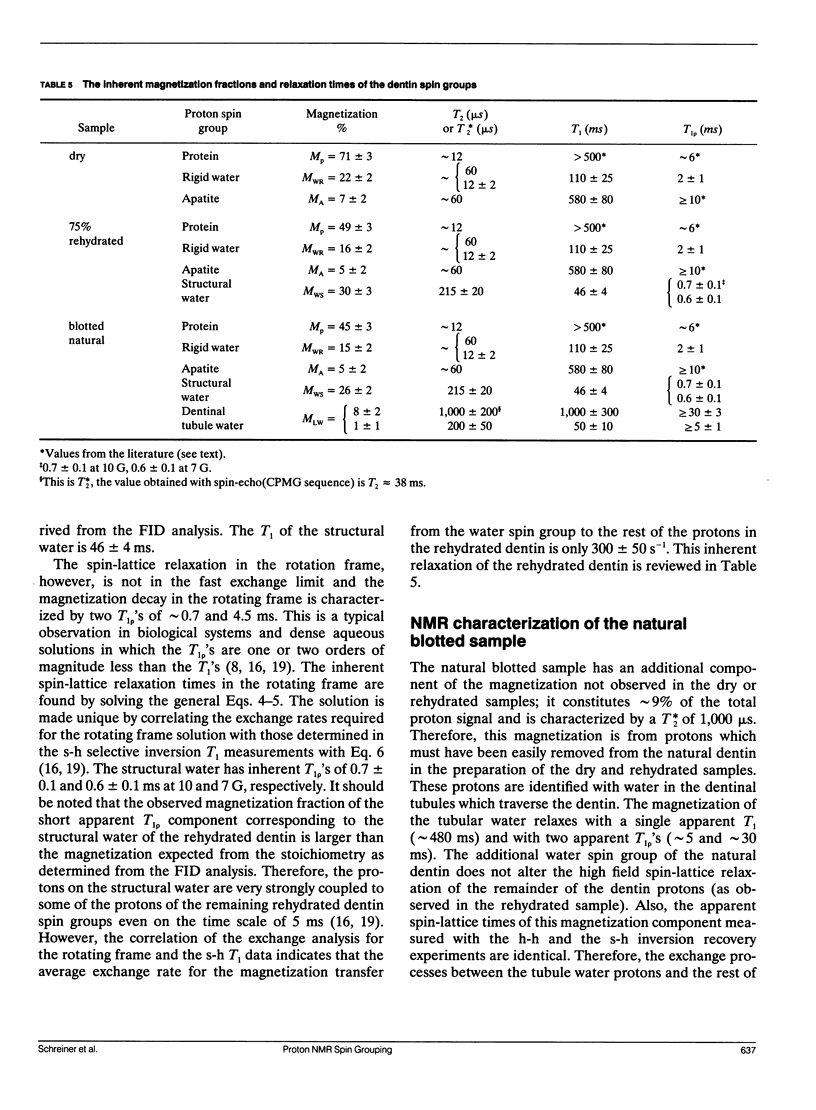


Selected References
These references are in PubMed. This may not be the complete list of references from this article.
- Dibdin G. H. The stability of water in human dental enamel studied by proton nuclear magnetic resonance. Arch Oral Biol. 1972 Mar;17(3):433–437. doi: 10.1016/0003-9969(72)90058-1. [DOI] [PubMed] [Google Scholar]
- Funduk N., Kydon D. W., Schreiner L. J., Peemoeller H., Miljković L., Pintar M. M. Composition and relaxation of the proton magnetization of human enamel and its contribution to the tooth NMR image. Magn Reson Med. 1984 Mar;1(1):66–75. doi: 10.1002/mrm.1910010108. [DOI] [PubMed] [Google Scholar]
- Myers H. M. Trapped water of dental enamel. Nature. 1965 May 15;206(985):713–714. doi: 10.1038/206713a0. [DOI] [PubMed] [Google Scholar]
- Peemoeller H., Yeomans F. G., Kydon D. W., Sharp A. R. Water molecule dynamics in hydrated lysozyme. A deuteron magnetic resonance study. Biophys J. 1986 Apr;49(4):943–948. doi: 10.1016/S0006-3495(86)83722-5. [DOI] [PMC free article] [PubMed] [Google Scholar]
- Schreiner L. J., MacTavish J. C., Pintar M. M., Rupprecht A. NMR spin grouping and correlation exchange analysis. Application to low hydration NaDNA paracrystals. Biophys J. 1991 Jan;59(1):221–234. doi: 10.1016/S0006-3495(91)82213-5. [DOI] [PMC free article] [PubMed] [Google Scholar]


